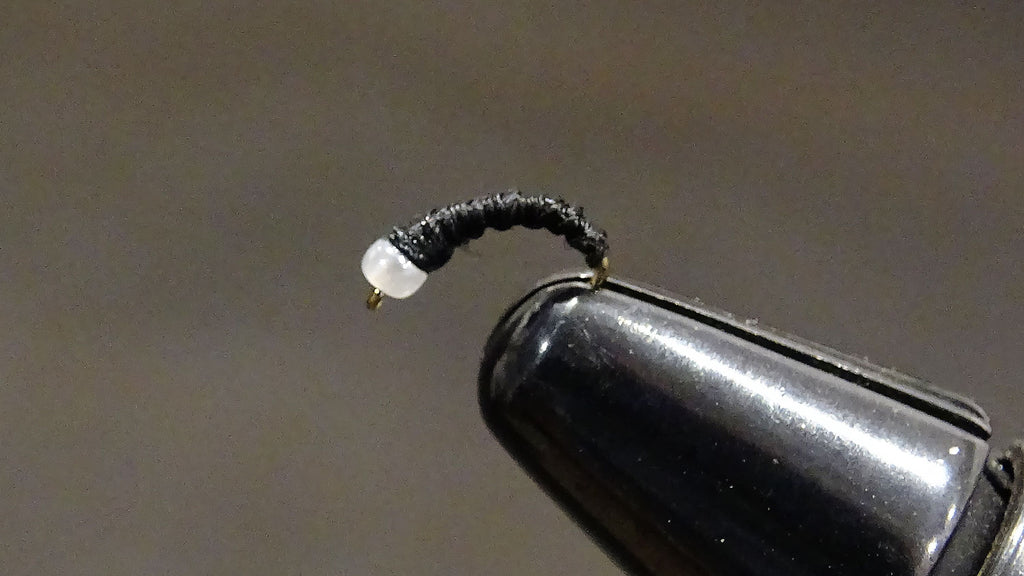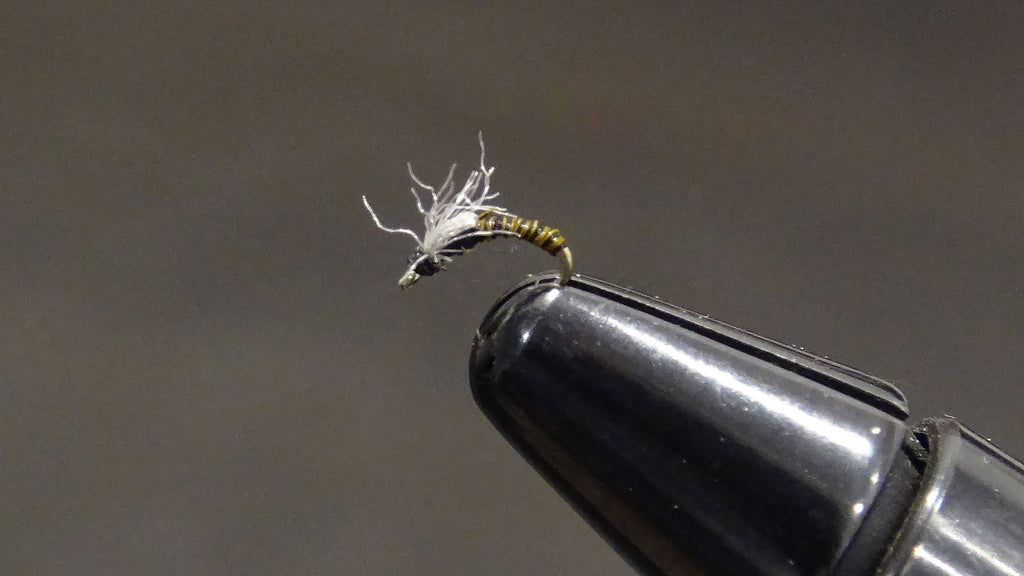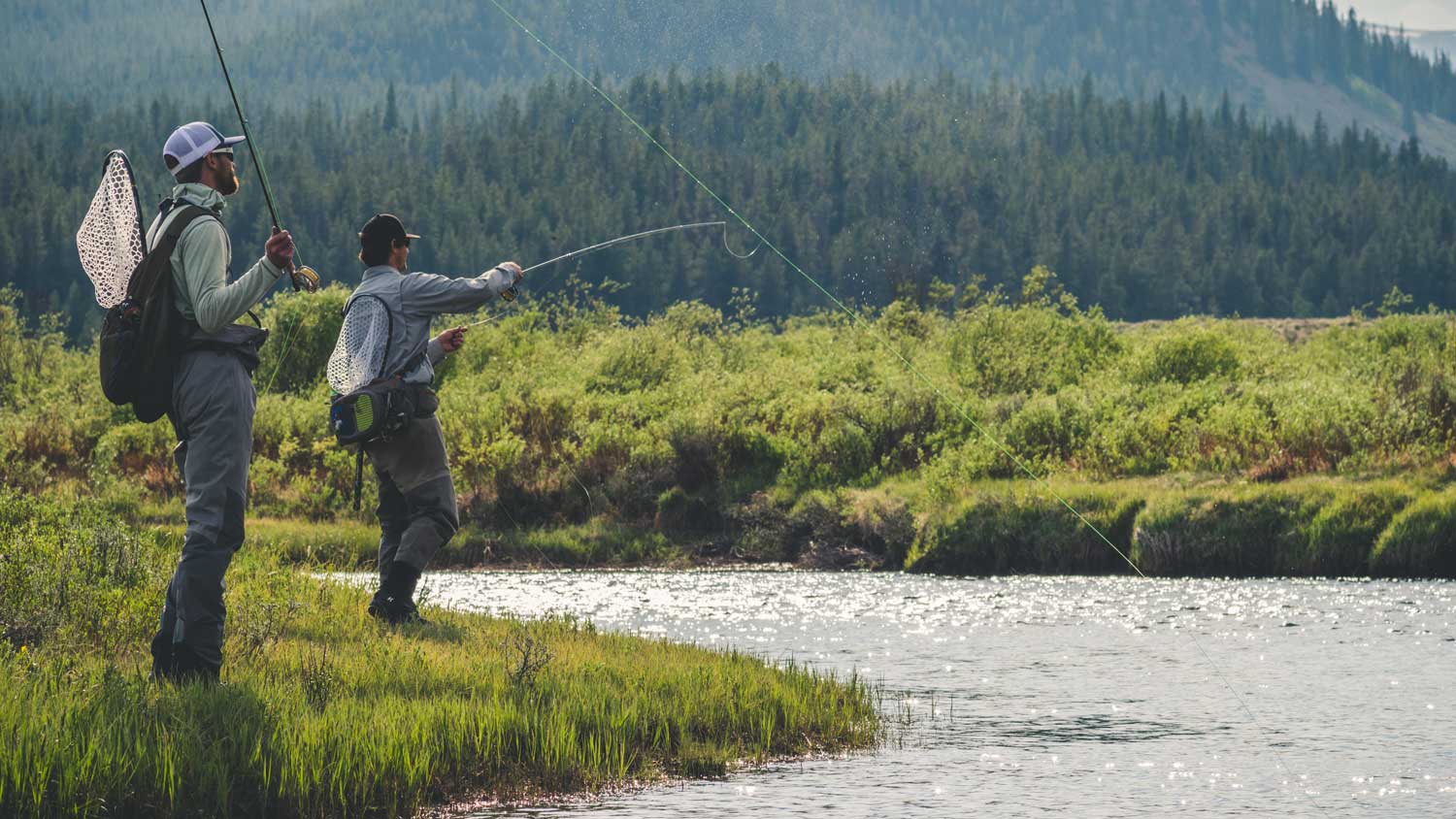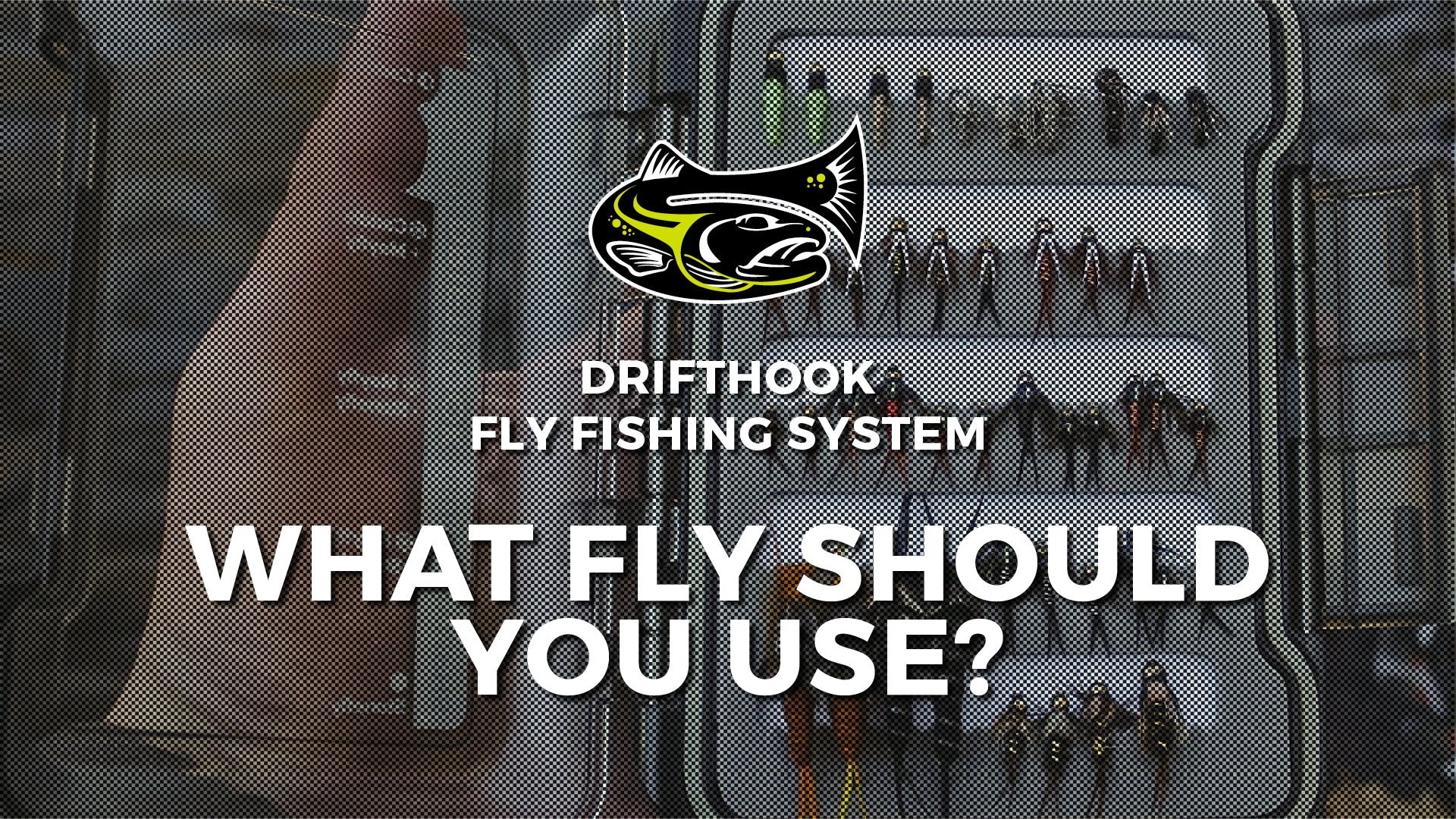
Don't be left out in the cold this January. Choose the right trout fly for the season, and it can make all the difference. From midges to streamers, here are the top trout flies to use when fly fishing in January. Below you can see a list of the best trout flies to use in January.
Midges- Mercury Midge
- Disco Midge
- Rainbow Warrior Midge
- Juju Bee Midge
- Twenty Incher
- Kaufman Stone
- Copper John Beadhead
- Sparkle Worm Red
- San Juan Worm
- Glo Bug Red Dot (Egg)
- Nuke Egg - Alaskan Rose
- Autumn Splendor
- Slump Buster with Cone
- Double Bunny
- Zonker - Grizzly
Midge Flies for January Fly Fishing
1. Mercury Midge
Don't make the mistake of thinking that winter fishing is a lost cause. The water might be cold with frost and ice around, and the trout might be on a diet, but the reality is they never stop eating or biting. Their metabolism indeed slows down in the colder months, but you still have good chances with the right fly.
The Mercury Midge is a larvae fly that imitates the early stages of midge development. It's typically made using thread and glass on a hook and is particularly effective in the winter months. The Mercury Midge gets its name principally from the glass bead at the head. This mimics an air bubble produced by the thorax of a midge close to the surface.
Since Midges account for around 50% of a trout's overall diet, the Mercury Midge fly is a successful option. Like other insects and animals, midges are less productive in the winter, but they are still present in the riverbed and surrounding vegetation. The clear glass on the Mercury Midge is an irresistible option for a hungry trout in winter rivers.
2. Disco Midge
The most popular form of winter food for trout is by far midges, predominantly in larvae form. Midge larvae are worm-like in appearance. They have slender curved bodies with segmented abdomens. They also have small heads with a clear bubble-like appearance on the water. In winter, the water can be dark and muddy, when a Disco Midge is most effective.
A Disco Midge is designed to imitate a midge larva floating at the surface of a winter river or lake. The bright thread and clear bauble on top are bright enough to catch the trout's attention in the muddy waters, but it won't scare them away by being too flashy.
It's quite common for the rivers and lakes to get cloudy and muddy in the winter months as the silt at the bottom turns over. A conventional midge fly might still be useful in such conditions, but the disco midge gives you that extra attention-grabbing feature to draw the trout's eye. If your fly isn't sufficient and you notice muddy conditions, try the disco midge.
3. Rainbow Warrior
It's not always easy to tell what your angling conditions will be like lakeside in the winter. You might find the water is clearer than expected due to runoff and floods. Other times it might be dark brown and impenetrable. For best results, it's advisable to carry a selection of midge flies, but one that should always be in your box is the Rainbow Warrior.
Tied to look like a midge larva, the Rainbow Warrior is the ideal pattern for many water conditions. The multicolored body and spiky mane not only convinces the winter trout that it's the real deal, but it also catches their eyes in murky rivers and lakes without standing out. The Rainbow Warrior fly delivers excellent results and is a must in the winter anglers flybox.
If you want a winter pattern that's simple yet effective and that stands out in muddy water without being too flashy, the Rainbow Warrior Midge is the one to choose. With a Rainbow Warrior Midge, you can virtually guarantee a bite – the hungry trout can't resist the sight of this tasty looking fly.
4. Juju Bee Midge
When other aquatic insects are dormant and inactive during the winter months, trout seize the opportunity of snagging anything that looks edible floating in the substrates. This often means midge larvae that have come loose from their tunnels or shelters in the silt or vegetation and drift along the water's surface.
Opportunistic trout often jump at the chance of an easy meal making this time of year especially fruitful for anglers with midge patterns. That said, occasionally, the trout so become fussy or wise to an obvious meal. For times like this, you need a fly that's a little more covert and discreet.
The Juju Bee Midge is the ideal solution. This fly pattern is instrumental in rivers in the winter months as it combines colorful threads with realistic-looking feathers. The midge is made to look like the midge larvae or adult midge floating downstream.
You can find all of these successful patterns in both our Nymph Frenzy Fly Fishing Kit and our Guide Nymphs Fly Fishing Kit
Stoneflies for January Fly Fishing
5. Twenty Incher
There's no doubt that fishing during the term closer months is harder for anglers. The trout become more lethargic and start to hide in deeper areas. Most of the river trout will be deep down at this time of year, seeking shelter in rubble and weeds. While a floating midge fly can be successful, sometimes you need something a little more active.
The twenty incher stonefly is one such pattern. This weighted fly is an intermediate level stonefly nymph that has a big reputation. This fly is capable of sinking fast into moving water and wandering into the path of sheltering fish. With so little insect activity around, it is irresistible to the hungry trouts.
The Twenty Incher Stonefly Nymph looks like a juicy insect in the water. It has a fat body and a round head made from a bead. This design makes it not only appealing for hungry trouts but also excellent in fast-moving water. The Twenty Incher is renowned for catching colossal trout.
6. Kaufman Stone
The conventional wisdom for winter fishing was always to fish big, black, and deep. This is partly due to the trout's situation, hiding in the murky depths of cold rivers and lakes, but also because of the food source availability at this time of year. Often trout will look out for water beetles floating by in the barren depths.
Water beetles are fat black insects that can be found in rivers and lakes around the world. They are a prominent food source for trout in the winter months and can be effectively replicated by the Kaufman Stone Nymph. The Kaufman Stone Nymph is big, black, and deep. It sinks to the level of the trout and easily imitates a water beetle in addition to the stone fly.
This pattern is handy in the winter months as it appeals to trout on two counts. Firstly it is big and obvious, even in murky waters; this is due to its legs that dangle out, suggesting movement and life. It further appeals to the trout because of its depth and shape, making it a hard to resist morsel.
7. Copper John Beadhead
If you want to catch big trout fish in winter water, you need the right pattern and the proper technique. You might have success with one or the other, but to ensure your time in the icy rivers and lakes isn't wasted, you need to maximize your chances with techniques and equipment. The Copper John Beadhead is one side of the coin.
At this time of year, the trout will be sheltering in the murky depths and will need some encouragement to come to the surface. The Copper John Beadhead is the perfect fly for the job. It is a small, flashy, and heavy fly that sinks to the bottom quickly and can be moved swiftly through the water is a figure eight to catch the attention of lurking trout.
To be successful with this pattern, you will have to move it swiftly, regularly, and in a range of patterns, so the fish don't become bored of chasing the same insect in the same way. If the Copper John Beadhead isn't returning results for you, try mixing up your pattern and changing pace.
You can find all of these successful patterns in both our Nymph Frenzy Fly Fishing Kit and our Guide Nymphs Fly Fishing Kit

Worms and Egg Patterns for January Fly Fishing
8. Sparkle Worm Red
The behavior of trout in winter waters is a little different from what you might be used to in the spring and summer months. The trout spend much more time at lower depths, around six feet below the surface in the morning and evenings. In the afternoon, you might find them closer to the surface. For this reason, you might want to adapt your pattern.
It's advisable to use a combination of patterns at various depths to encourage lethargic trout to the surface and grab the attention of less active ones content in their shadowy hollows. A Sparkle Worm fly is an excellent complement to a more active pattern like a midge or stonefly. The Sparkle Worm can play the long game.
Even if you're an active Fly Fisher, you might want to have a Sparkle Worm in the water. The red color imitates a blood worm in the water, its color and movement suggest life, and it's sure to catch the eye of an unsuspecting trout at some point. Improve your odds at winter trout fishing with a Sparkle Worm pattern.
9. San Juan Worm
When fishing for trout in winter, it's a good idea to start midmorning, skip lunch and finish mid-afternoon. Following this pattern means you concentrate your efforts on the peak hours when the trout are most active. Your best chance of them stirring in the cold waters is in the afternoon, but midmorning is an excellent time to set up and settle your patterns.
Make one of your patterns the San Juan worm. This is a basic worm fly that gets its name from its success on the San Juan River. It's a red worm pattern that's very easy to tie and excellent for beginners. The pattern rests in the winter water for hours and mimics a blood worm. Its movement and color are highly appealing to trout emerging from the depths in search of food.
This pattern is a beginner's fly for two excellent reasons. The first one is that it's straightforward to tie and can be learned and used quickly. The other reason it's good for beginners is its success rates. The San Juan worm is renowned for catching lots of trout.
10. Glo Bug Red Dot (Egg)
When you're trout fishing in the winter, it's important to feel comfortable. The temperatures are low, and if you're in the water fly fishing, you need the proper attire. As well as wader boots and an appropriate fishing vest wear, remember to layer up. Also, wear surgical latex gloves to protect your skin but still give you dexterity.
This advice is particularly relevant if you're using an egg pattern. These pattern imitate eggs of various kinds and are most effective when bobbing along the river bed. If the egg stands out in some way, because of a red dot, for instance, It will catch the eye of a lurking trout and look like an egg that's come loose from a nest. The perfect catch.
The Glo Bug Red Dot Egg is designed for precisely this purpose. It's white like any conventional egg, this is important to convince the trout of its authenticity. However, the red dot makes it stand out as it moves along the riverbed catching the eye of the trout and generating interest.
11. Nuke Egg - Alaskan Rose
The habits of work to catching trout needs to be carefully considered when angling in the cold water lakes and rivers. The trout are susceptible to the conditions and tend to sit at comfortable depth at different times of the day. Depending on when you show up to fish, you may need a variety of patterns and techniques.
One excellent method is to employ a twin pattern. One can be a midge or stonefly while the other is an egg, such as the Nuke Egg – Alaskan Rose. This effectively covers two different depths of water and increases the chances of your fly, attracting a lethargic trout. The Nuke Egg is perfect for the lower depths when there is little light left.
The Nuke Egg is an extremely versatile egg pattern that can be tied to imitate various kinds of egg patterns as an attractor or imitator. One of its key attributes is the colorful shroud that gives it a natural pattern and looks almost transparent when wet.
You can find all of these successful patterns in both our Nymph Frenzy Fly Fishing Kit and our Guide Nymphs Fly Fishing Kit
Streamer Fly Patterns for January
12. Autumn Splendor
It's best for winter fishing to use streamers in the afternoon when the trout are likely to be closer to the surface. As the name suggests, the Autumn Splendor is more useful when trout are more mobile. However, that doesn't mean this active form of angling can't be successful in the winter months.
The Autumn Splendor is a classic tie form that is designed to imitate surface bugs and flies. It is extremely feathered, leggy, and colorful, making it most appealing to hungry winter trout coming near the surface in the icy afternoons. On further advantage of active angling in winter is the exercise and increase in heart rate.
13. Slump Buster with Cone
When you are angling in the winter shallows, you need a pattern that offers a range of features. It would help if you had something that mimics the conditions and local insects, something that sinks too appeal to low laying fish, and something easy to tie. The Slump Buster with Cone is the pattern you need for a practical day on the water.
The Slump Buster with Cone is made to be useful for trout fishing and will land you a big fish in any season. While it may be more challenging to catch the trout in this manner during colder months, the Slump Buster narrows the odds by providing depth and realistic appeal. The trout are likely to view the dark moving object as a potential meal.
14. Double Bunny
The Double Bunny streamer is a pattern you can use successfully in any season. It is both colorful, bold, and big enough to imitate a juicy insect meal. Although this color and size might be more suited to the warmer months, especially summer when these insect types are more common, the pattern can also work effectively in the winter.
If you combine the Double Bunny with an egg pattern or a stonefly, and if you bring your angling skills to bear in the afternoon when the trouts are lurking at the surface, you narrow the odds of success. When a hungry trout sees the double bunny pattern hopping on the surface or slipping through the water, it won't pass on the opportunity to bite.
14. Zonker - Grizzly
The Zonker Grizzly is another effective streamer pattern to try in the winter months. This is a feathered pattern that mimics a small insect on the surface – such as a moth. Used in combination with sink patterns, this fly is excellent at creating movement on the water surface and appealing to the trout as a local insect. It is coupled with a sink pattern or egg along the bottom. There should be plenty of movement in the area to appeal to hungry midmorning trout.
You can find these successful streamer patterns in our Streamer Surge Fly Fishing kit.
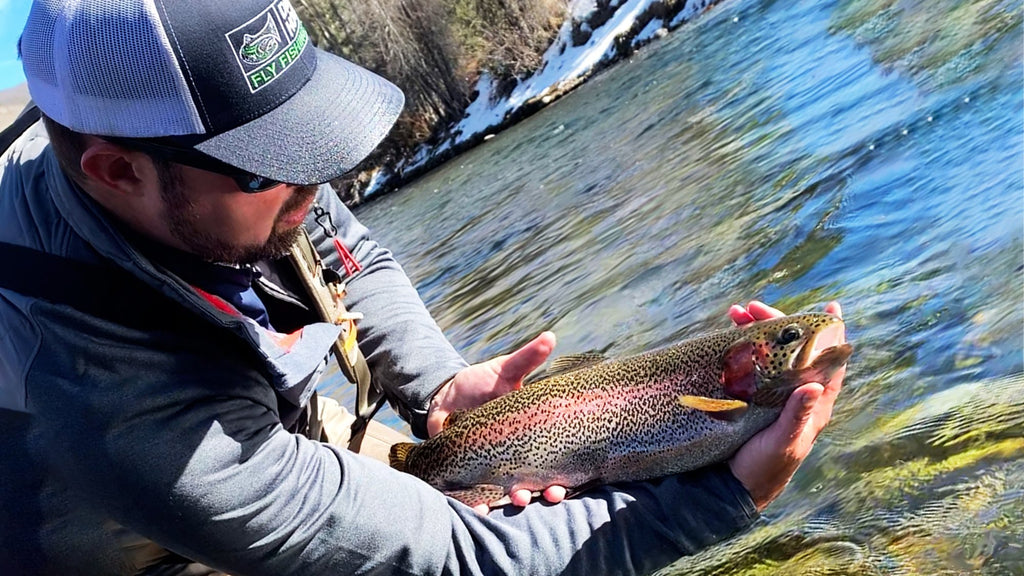
Matthew Bernhardt, a third-generation Coloradan, grew up at the forefront of the state’s fly-fishing revolution, enjoying time on the water, side by side with experienced guides and lifelong anglers.
By combining his passion for fly-fishing with input from other experienced fly-fishers and guides and his fine arts degree from Colorado State University, Matthew spent five years carefully developing the Drifthook Fly Fishing System, built to help every angler catch more trout.
When he’s not spending time with his wonderful family, you’ll find him out on the water catching MONSTER trout, and he anxiously looks forward to the day when his kids are old enough to join him there.


